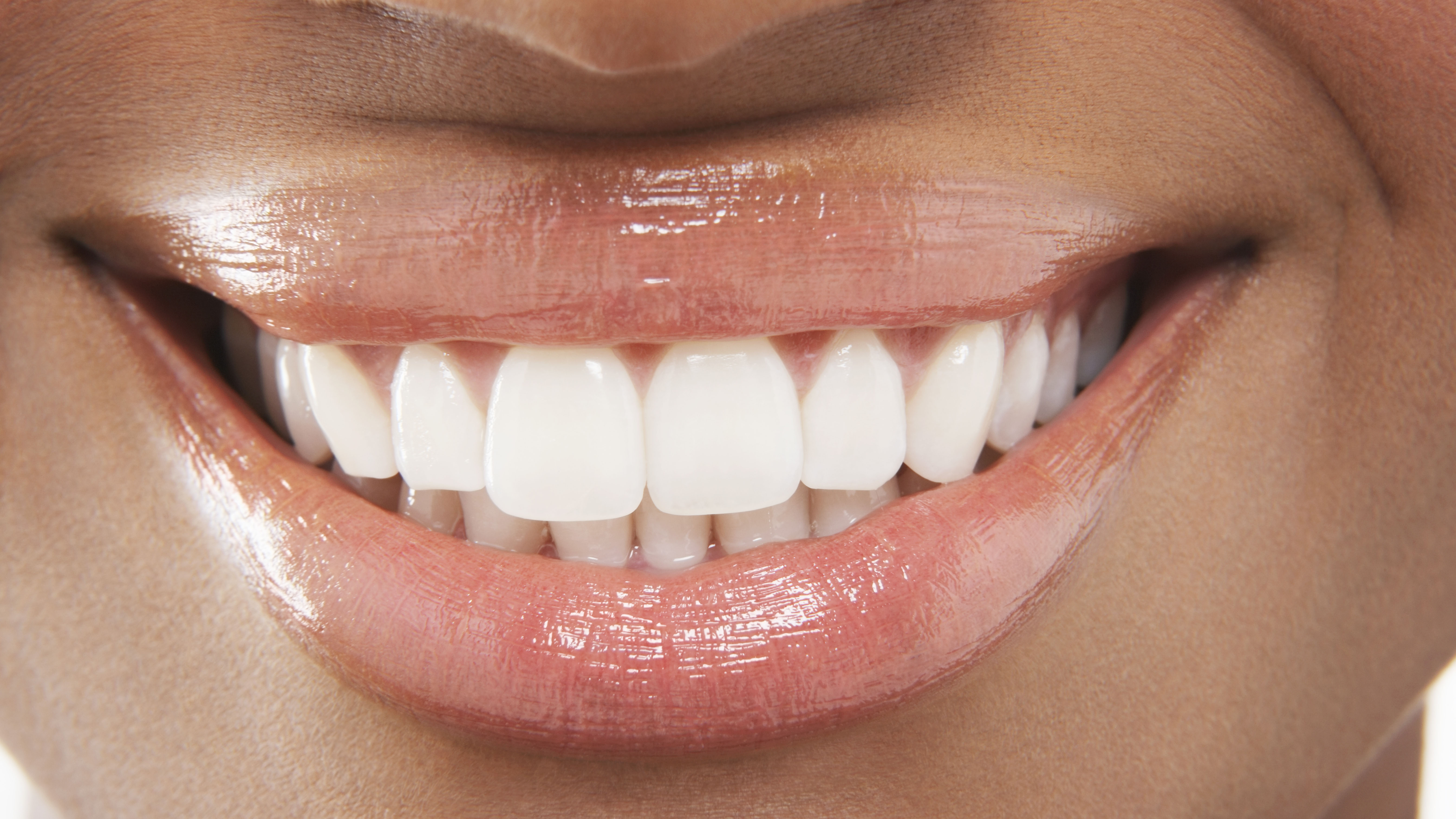Transform your smile with the best tech innovations in cosmetic dentistry
Want perfect pearly whites? New technology is transforming the cosmetic dentistry landscape. Here, the UK’s top dentists reveal the most innovative treatments on the market

Want perfect pearly whites? New technology is transforming the cosmetic dentistry landscape. Here, the UK’s top dentists reveal the most innovative treatments on the market
We Brits were once famous for having the worst teeth in the world. Not any more. Thanks to a new wave of tech, the UK cosmetic dentistry market is booming. The industry was valued at more than £2 billion in 2016 and is predicted to increase by up to 4.2 per cent each year until 2021*. Dr Neil Counihan, who qualified in New York as a specialist, says he has seen huge shifts in both technology and attitudes. ‘Brits, especially those in their twenties and thirties, know much more about ageing and longevity. They recognise that your teeth have a massive impact on your confidence and sense of self.’
And it’s not just orthodontics progressing at a pace. Dr Mark Hughes, who founded Harley Street Dental Studio, says: ‘Like medicine, dentistry is a technology-driven profession with more innovations materialising by the week. Digital photography is the big one. It enables us to explain conditions and treatment options to patients with more clarity via Google Slides and Loom. Digital scanning means treatments are efficient, effective and less invasive than before.’
For Rachelle Kyriacou, 24, new-gen tech has given her a confidence reboot in just two weeks − in the form of veneers. ‘Before, my teeth’s edges were jagged and dark, so I hid my smile,’ she says. Rachelle was treated by Dr Mervyn Druian over two weeks and had porcelain veneers created to her specification. ‘Now I smile without feeling self-conscious,’ she says. ‘The change in my confidence is massive.’ Lucy Wills, 32, is having Invisalign orthodontic treatment for similar reasons. ‘My top teeth used to stick out and cross over,’ says Lucy. ‘I’m halfway through treatment, and watching them straighten has been a boost.’
With more women than ever coveting an Insta-smile, we asked three of the UK’s top dentists to talk us through the latest innovations.
Whitening Rhona Eskander is a multi award-winning dentist and winner of Best Young Dentist at The Private Dentistry Awards 2016. She has been practising for seven years and is based at the Chelsea Dental Clinic in London.
What’s new? ‘The Philips Zoom system in-clinic and at-home whitening kit. For home whitening, you start with a consultation with your dentist. If you’re prescribed a treatment using bespoke whitening trays, your dentist will use moulds to create them. The trays are then dotted with a special Zoom whitening gel, which can be worn either in the day [30 minutes twice a day] or at night [for four to six hours] with results within two weeks. The gel has an anti-sensitivity component to avoid common side effects of teeth whitening – sensitivity and gum irritation. The in-clinic version uses an additional LED light to accelerate whitening, so the results are faster – you can achieve up to six shades lighter in just 60 minutes. This chair-side treatment costs £600-700; at home it’s around £300. Recently, a third tier has been added − Zoom QuickPro (from £150). This is a simple two-layer process that can be done at home and doesn’t require trays. Your dentist applies a hydrogen peroxide whitening varnish to the teeth, which is topped by an innovative sealant layer that locks the hydrogen peroxide layer into place. The patient simply paints on the two layers at home, waits 30 minutes, then brushes it off. This four-day treatment whitens teeth by up to four shades.’
Why it works: ‘The Zoom whitening gel’s amorphous calcium phosphate formula provides better sensitivity control and enamel protection than traditional systems, which relied on higher levels of hydrogen peroxide. Plus, in the past, providers weren’t regulated as they are now, so there were cases of burnt gums.’
The small print: In 2012, legislation changed. It’s now illegal for under-18s to whiten their teeth. For over 18s, treatment must be carried out by a qualified dental professional. Salons and beauticians are no longer allowed to provide or carry out tooth whitening unless they’re a General Dental Council registered professional. The legal amount of peroxide has also changed. It is now legal to use six per cent hydrogen peroxide or 16 per cent carbamide peroxide, whereas in the past it was more. Teeth can be discoloured for a number of reasons, so check with a dentist before whitening.
Veneers Dr Mervyn Druian has nearly 30 years of experience and is an award-winning practitioner. He was the first to introduce porcelain veneers to the UK and counts former prime ministers and A-list celebrities among his client base. He founded and works out of The London Centre of Cosmetic Dentistry.
What’s new? ‘I can hardly believe the technology that is available today. New porcelains include E-Max and Zirconia, which are extremely strong, so you can create very thin veneers − this makes a huge difference to the visual effect that can be achieved. Technology has also made veneers more predictable. Before, the porcelain was not particularly strong and you had to take away a fair amount of the tooth before applying. Once installed, veneers were far more likely to chip, too.’
Why it works: ‘Recent advances have transformed the process. Today, very little prep has to be done. A patient coming to see me for veneers − that would be someone with very dark stained teeth who has already tried bleaching and every other whitening method available − would be examined by a dentist and hygienist to ensure the mouth is in perfect health. Once we’re happy, we scan the mouth and teeth. Advances in scanning mean the dimensions are very stable and more accurate than the impression created using a mould. The scan goes straight to the laboratory so that I can discuss options with the patient while the scan is analysed in front of them. This means veneers are personalised and can be produced more quickly with natural-looking, longer-wearing results.’
The small print: Veneers can be a one-off treatment, but it depends on the quality of the product and how well you care for your teeth. The cost is between £700 and £1,200 per veneer.
Orthodontics Dr Neil Counihan is a leading orthodontic specialist who trained in the UK and the US, and specialises in non-extraction, pain-free treatment at Metamorphosis Orthodontics.
What’s new? ‘Since I qualified as an orthodontic dentist 15 years ago, I’ve seen an explosion in adults, particularly in their twenties and thirties, getting braces. My philosophy is that I don’t like taking healthy tissue out of a healthy human. But using the latest technology I can use a non-extraction phase-driven approach. Also, traditionally, braces had elastics wired into the bracket; these were hard to clean as they would fill with saliva. Today, the lighter, smarter design means less intrusion.’
Why it works: ‘With Damon, a high-tech low-friction system, braces are less obvious. Entry price starts at around £3,000 − so, not much more than traditional train tracks. The self–adjusting Damon system is attached to the teeth through a series of brackets made either from plastic or metal in a process called binding. Each bracket is placed on the tooth with a different degree programmed into it, so that it pulls at the perfect angle. Then the wires we attach to the brackets have a shape memory and are super elastic so they can curl into crooked teeth, and are activated by the temperature of your mouth. They can then gently move teeth through the bone into the right position.’
The small print: You can use braces at any age, but they’re not suitable for patients with weakened gums or poor dental health. Average treatment time is around two years, depending on how much work needs to be done.
Talking points Thinking of changing your smile? Here’s how to do it safely
A rising number of Brits go abroad for cheaper treatments. If you choose this option, do your research first. Make sure the practitioner you choose is registered to an internationally recognised and approved body, such as the General Dental Council or Royal College of Surgeons of England.
Before using a home-whitening kit, see your dentist to check you have no contraindications such as weak enamel or gum disease. Beauticians offering whitening treatments can only legally do so if they are a General Dental Council (GDC) registered professional. Your teeth naturally move closer together as you age, so keep this in mind before getting braces; you might hate that gap between your teeth now but, in a few years’ time when your teeth aren’t fighting for space, you might be grateful for it.
*According to market research company Mintel
Marie Claire Newsletter
Celebrity news, beauty, fashion advice, and fascinating features, delivered straight to your inbox!
The leading destination for fashion, beauty, shopping and finger-on-the-pulse views on the latest issues. Marie Claire's travel content helps you delight in discovering new destinations around the globe, offering a unique – and sometimes unchartered – travel experience. From new hotel openings to the destinations tipped to take over our travel calendars, this iconic name has it covered.
-
 Style Briefing: Matthieu Blazy's last hurrah at Bottega Veneta
Style Briefing: Matthieu Blazy's last hurrah at Bottega VenetaHow the designer delivered a fresh perspective while also honouring its history of craft and creativity
By Rebecca Jane Hill
-
 The Emily in Paris cast has spoken out as one of its stars officially quits the show
The Emily in Paris cast has spoken out as one of its stars officially quits the showBy Jenny Proudfoot
-
 Timothée Chalamet’s mother has opened up about his relationship with Kylie Jenner
Timothée Chalamet’s mother has opened up about his relationship with Kylie JennerBy Jenny Proudfoot